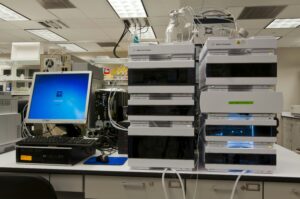
Australia’s green energy transition is facing significant challenges, with surging transmission costs and delays in project timelines. As of 2025, no large-scale wind projects have reached financial closure, raising concerns about the country’s renewable energy future. However, the household sector remains resilient, driven by rising electricity bills that continue to fuel the popularity of rooftop solar. The federal home battery rebate has also been a remarkable success, demonstrating the potential of solar and battery storage technologies.
These two technologies—solar and battery storage—are emerging as the best options for utility-scale projects. Their declining costs, particularly in battery storage, and ease of deployment make them an attractive choice for meeting the demands of large industrial consumers. The trend is evident as few developers are willing to pursue solar-only projects due to the growth of rooftop solar, which often results in negative prices during daytime hours.
The Rise of Solar Battery Hybrids
Despite the promising outlook, a large-scale solar battery hybrid project has yet to be operational on Australia’s main grid. The Cunderdin solar battery project in Western Australia’s separate grid has demonstrated the potential of these systems by shifting solar output to meet evening peak demands and occasionally extending beyond midnight.
This scenario is set to change with several solar hybrid projects under construction, including those at Fulham in Victoria and Quorn Park in New South Wales. The most significant project is anticipated near Gladstone in Queensland, designed to supply firm power to Rio Tinto’s Gladstone aluminium smelter and refineries. Lachlan Martin from Edify Energy highlights the magnitude of this development, referencing a 600 MW, 2,400 MWh contract with Rio Tinto, marking the largest of its kind.
Innovative Contract Models
Unlike traditional power purchase agreements (PPAs), the deal with Rio Tinto is a revenue share agreement. Martin explains,
“It’s not a PPA; it’s a revenue share agreement. Rio will receive value not just from the megawatt hours generated but also from additional revenue from FCAS or other grid services.”
This model reflects the evolving landscape of energy contracts, where industrial users seek more tailored solutions.
Rio Tinto’s commitment to transitioning from coal to renewables is evident, with significant contracts already in place for the Bungaban wind project and Upper Calliope solar project. The DC-coupled solar battery hybrid model offers several advantages, such as avoiding system strength charges and storing solar output when prices are negative, providing flexibility and cost efficiency.
Market Dynamics and Future Trends
The introduction of new peak futures contracts on the Australian Stock Exchange, focusing on evening peaks, aligns perfectly with solar hybrids equipped with four-hour batteries. Martin emphasizes the strategic fit of these systems, stating,
“These are perfect for solar hybrids to defend. They have overlapping solar profiles and battery discharge profiles, offering a strong future revenue source.”
Solar hybrids are also well-positioned to compete in the federal government’s expanded Capacity Investment Scheme, targeting 40 gigawatts by 2027. Martin notes that solar hybrids can be competitive in these auctions due to their cost advantages and the ability to recover revenue independently.
Challenges and Opportunities
While the capital costs of solar and batteries are decreasing, wind energy faces challenges with rising capital costs and approval hurdles. No new planning approvals for wind projects have been submitted in Queensland this year, partly due to previous cancellations and state interventions. Martin warns of the risks associated with relying on uncertain wind project pipelines,
“Wind development timelines and approvals are becoming increasingly challenging, and we can’t risk electricity consumers waiting for a pipeline of projects that might not eventuate.”
Data centers, consuming 2.4% of Australia’s load, are expected to grow by 25% annually, further emphasizing the need for reliable energy solutions. Stephen Sproull from Hitachi acknowledges Australia’s leadership in solar and battery adoption but notes a lag in DC-coupled solar hybrids. Jack Tan from Tesla advocates for a mix of AC and DC coupling technologies, highlighting the flexibility of AC-coupled systems.
Conclusion: A Path Forward
As Australia navigates its green energy transition, solar battery hybrids offer a promising path forward. Their ability to provide firm power, adapt to market dynamics, and align with industrial needs positions them as a crucial component of the country’s energy strategy. With ongoing developments and innovative contract models, Australia is poised to lead the way in integrating solar battery hybrids into its energy landscape.
For those interested in supporting independent media and accurate information, consider making a donation or becoming a regular supporter of Renew Economy. Your support is invaluable in promoting informed discussions on energy and sustainability.







